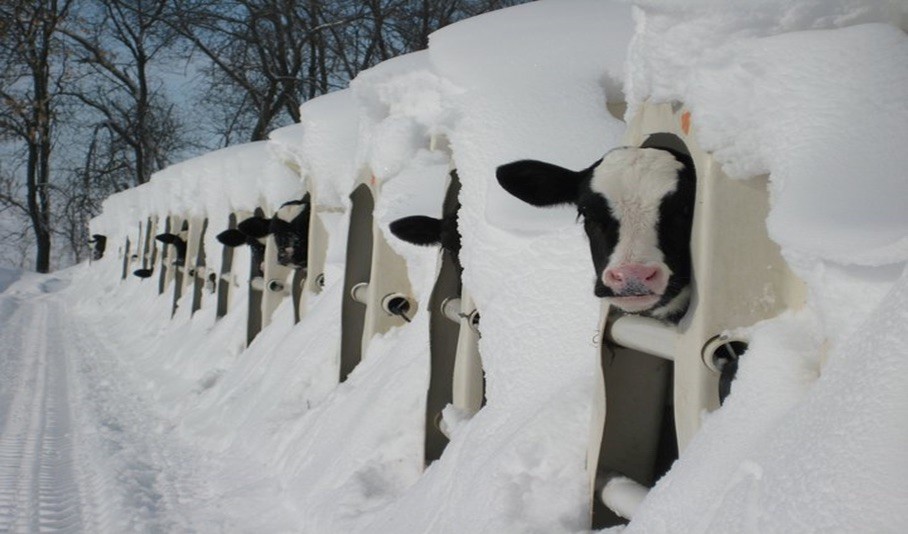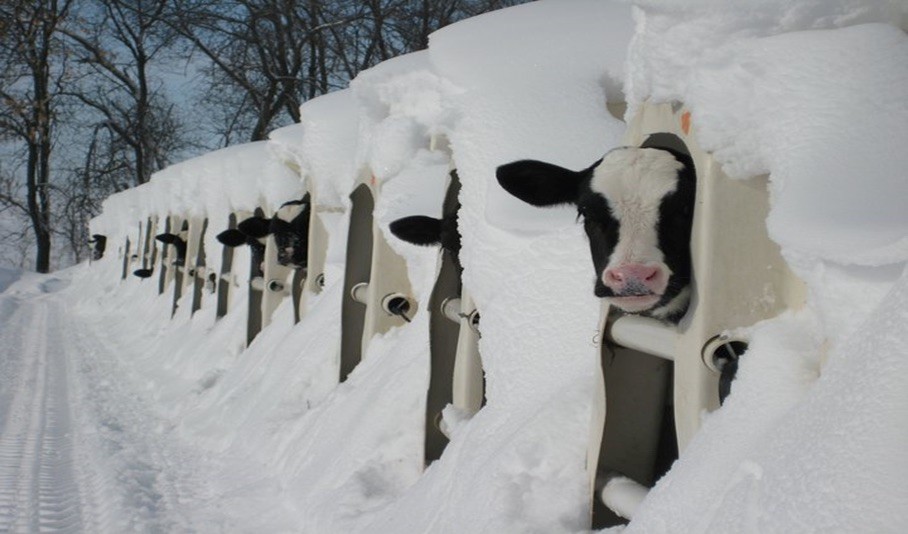- Ruminants
Winter is a high-risk period for calves in the first month of their life. For every degree below 10°C, a young calf needs 2% more energy from milk to keep itself warm. If the calf is sick or their fur is wet, this energy requirement increases. A calf also absorbs fewer nutrients when it has diarrhoea. Read our tips for achieving optimal growth and health in the youngest calves during cold spells.

- Optimise colostrum supply to improve calf resistance. Provide colostrum often, quickly and in large quantities. If you have doubts about the quality (concentration of antibodies) of your cows' colostrum, you can always have some colostrum tested. You can use a refractometer to determine whether the colostrum meets the highest standards.
- Place a thermometer near the calves. If the average stable temperature is around 5°C, give 10% more feed! If the temperature drops to 0°C, give 20% more feed!
- Use good calf milk. Especially in the first weeks of life, using a good milk powder is the basis for a healthy and fast rearing of your calves. This is the right investment for profitable rearing. In this case, cheap is expensive!
- Feed the milk at the correct temperature. It is important to dispense the milk at a temperature of around 40°C. This prevents the calf's energy from being lost unnecessarily. Calves prefer to drink through a teat. Both measures help to make sure the milk enters the abomasum and reduce the chance of a rumen drinking.
- Use a calf jacket. By using a calf jacket in the first few weeks, a calf loses less heat and is better able to maintain its body heat. The calf needs less energy to maintain its body temperature.
- Use ample bedding. Calves should have a nest that is completely draught-free and dry. In case of doubt, you can perform the knee test: get down on your knees in the pen to see if the pen is dry. If your knees get wet, it is high time to muck out the pen. You can consider spreading a pack of sawdust, ground rapeseed straw or ground flax, for example, to keep the pen perfectly dry for a while.
- Use a heat lamp on new-born calves as they are very sensitive to the outside temperature. For the first 24 hours, put a heat lamp above the calf if the temperature in the calf pen is below 10°C. That way, calves will dry up sooner and it will be easier for them to maintain their body temperature.
If you take the above measures, the calf will be more resistant to diarrhoea and respiratory problems. The calves’ growth will also be expedited because they need less energy to keep warm. This means more growth per kg of feed, fewer diseases and lower costs.
